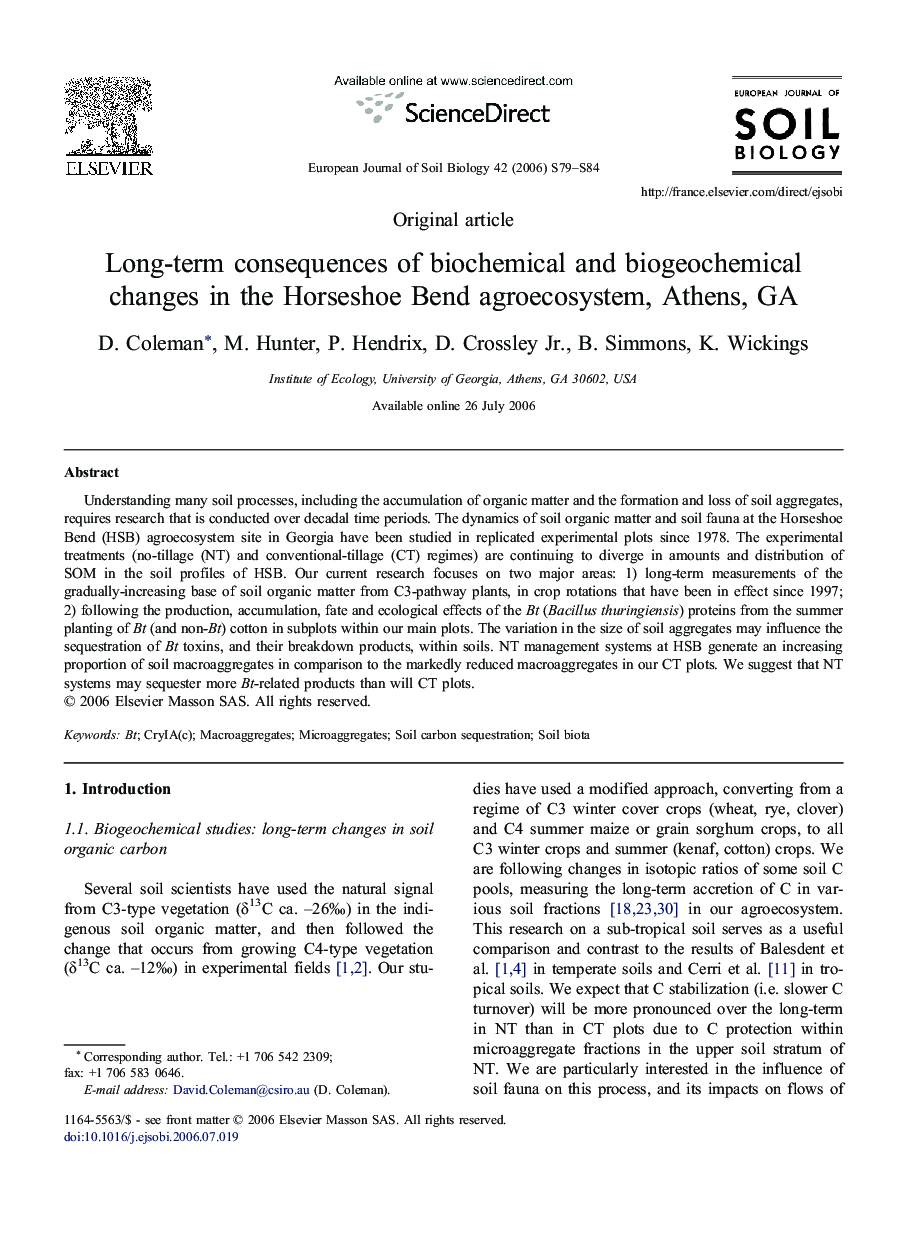| Article ID | Journal | Published Year | Pages | File Type |
|---|---|---|---|---|
| 4392596 | European Journal of Soil Biology | 2006 | 6 Pages |
Understanding many soil processes, including the accumulation of organic matter and the formation and loss of soil aggregates, requires research that is conducted over decadal time periods. The dynamics of soil organic matter and soil fauna at the Horseshoe Bend (HSB) agroecosystem site in Georgia have been studied in replicated experimental plots since 1978. The experimental treatments (no-tillage (NT) and conventional-tillage (CT) regimes) are continuing to diverge in amounts and distribution of SOM in the soil profiles of HSB. Our current research focuses on two major areas: 1) long-term measurements of the gradually-increasing base of soil organic matter from C3-pathway plants, in crop rotations that have been in effect since 1997; 2) following the production, accumulation, fate and ecological effects of the Bt (Bacillus thuringiensis) proteins from the summer planting of Bt (and non-Bt) cotton in subplots within our main plots. The variation in the size of soil aggregates may influence the sequestration of Bt toxins, and their breakdown products, within soils. NT management systems at HSB generate an increasing proportion of soil macroaggregates in comparison to the markedly reduced macroaggregates in our CT plots. We suggest that NT systems may sequester more Bt-related products than will CT plots.
